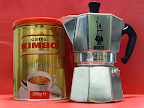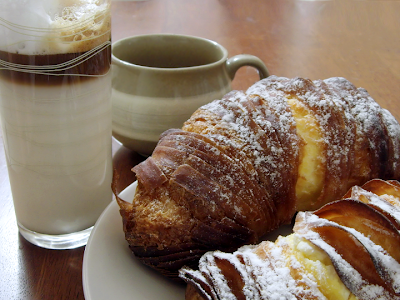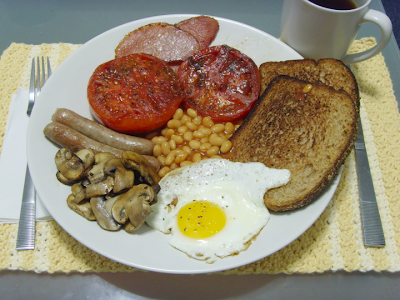Background
Finding Italian breakfast was very interesting. In America, Italian cuisine is heavily influenced by immigrants adapting to local custom and available ingredients. A book that exemplifies this fusion is Buongiorno! by Norman Koplas. It has some great looking recipes in it but they are ideas in Italian cuisine adapted to breakfast with a few authentic dishes mixed in here and there.
This blog post discusses the difference between the two countries. Her assertion is that Italians mostly eat grains, breads, and, cakes in the morning and that meat is for the evening. This clue started us looking books of Italian baking and desserts. We found two fantastic books in The Southern Italian Table and Desserts and Sweet Snacks: Rustic Italian Style. Both of these volumes have some excellent recipes. The Southern Italian Table provided provided confirmation of these assertion and offered a long list of breakfast treats. The author provided us with the information that most Italians buy these from bakeries.
Our first stop was Sessa's, an Italian deli in Davis Square. Not being a bakery, they did not have exactly what we were looking for, though they are well-stocked in other Italian foodstuffs. The next idea was to try Modern Pastry up in Medford Square. Kitty had forgotten her forgot bus pass, so we decided to walk over. Serendipitously we passed Lyndell's Bakery during our wander and went inside. We were lucky enough to find and recognize sfogliatelle, aka lobster tails, a specialty of Naples recommended by our book.
 The next quest was for the appropriate coffee. We decided on two drinks that are almost ying and yang to one another: caffellatte and latte macchiato. Caffellatte is milk added to espresso and latte macchiato is espresso added to milk that is foamed on top. To make both, we used our brand-new Moka pot, and about 1 cup of milk frothed by the mason-jar method. For the caffellatte, just pour one demitasse of coffee, then one of milk (save the foam for the macchiato). The latte macchiato is a little more involved: pour the rest of the milk and foam into glass, and then gently pour in, over the back of a spoon, about ½ demitasse of coffee, which should settle between the milk and the foam.
The next quest was for the appropriate coffee. We decided on two drinks that are almost ying and yang to one another: caffellatte and latte macchiato. Caffellatte is milk added to espresso and latte macchiato is espresso added to milk that is foamed on top. To make both, we used our brand-new Moka pot, and about 1 cup of milk frothed by the mason-jar method. For the caffellatte, just pour one demitasse of coffee, then one of milk (save the foam for the macchiato). The latte macchiato is a little more involved: pour the rest of the milk and foam into glass, and then gently pour in, over the back of a spoon, about ½ demitasse of coffee, which should settle between the milk and the foam.Results and Discussion
The sfogliatelle was great. The custard filled center is surrounded by a bready pastry. This pastry is then surrounded by a thin flaky pastry wrapped around in single stands that pull off the pastry in a continuous spiral. It was quite fun to pull off and I would have had someone hold one end and run across the room to watch it unwind, but I was told this was not allowed. I would like to try making these from scratch because they are tasty and showy.
The Moka pot makes a nice strong coffee, good for espresso drinks without needing all the complicated machinery. The latte macchiato was very nice. I like coffee flavor but I find espresso overpowering. Blending the espresso with mostly milk cuts the strength and leaves the flavor. The presentation also looks complicated and this will impress your guests.


